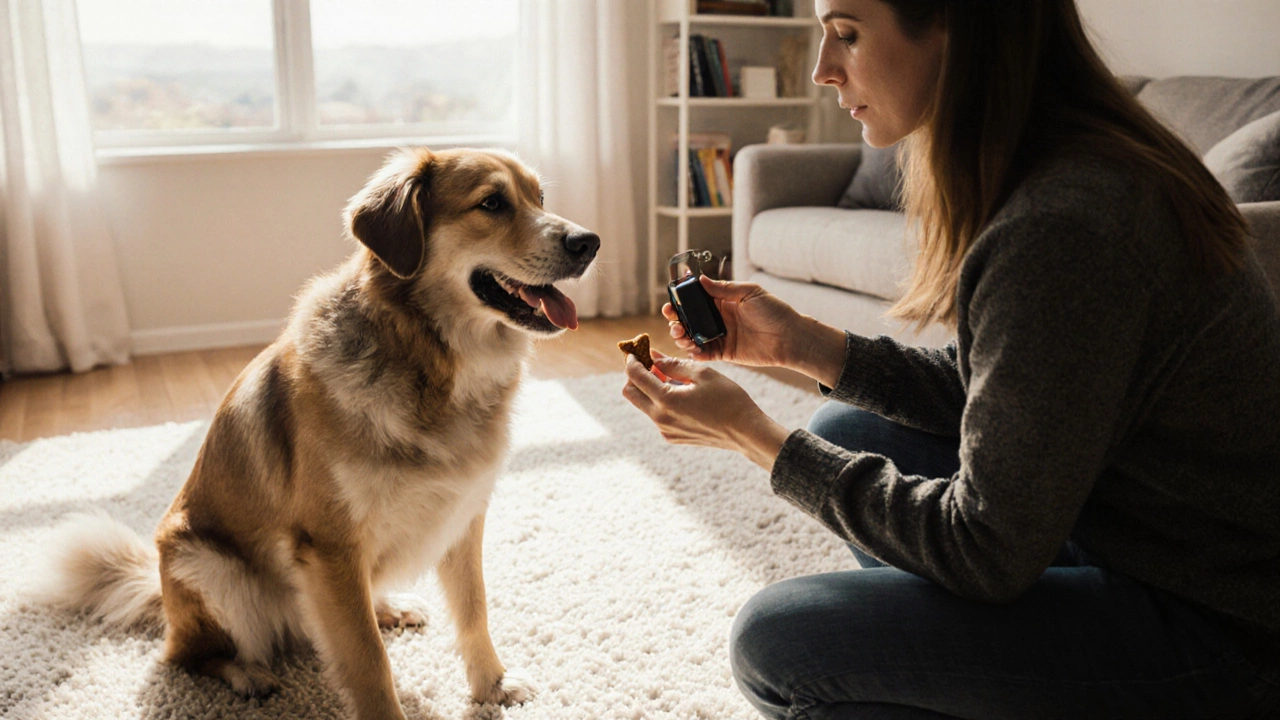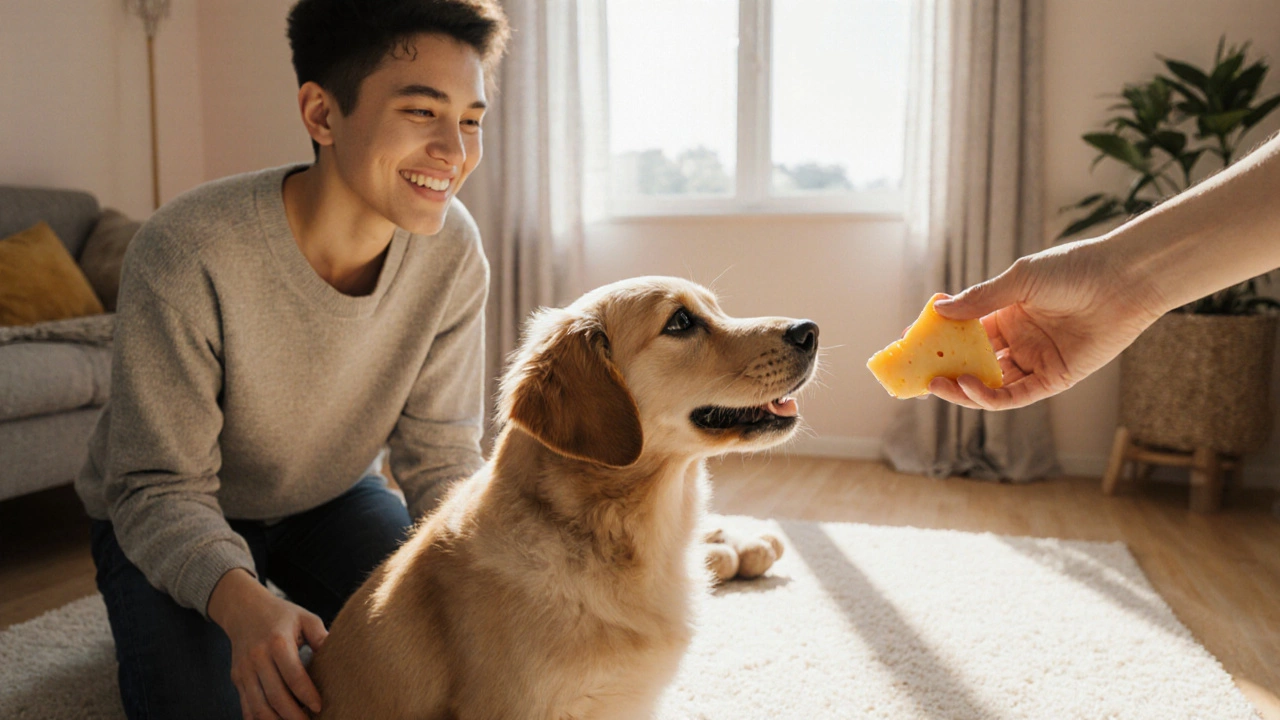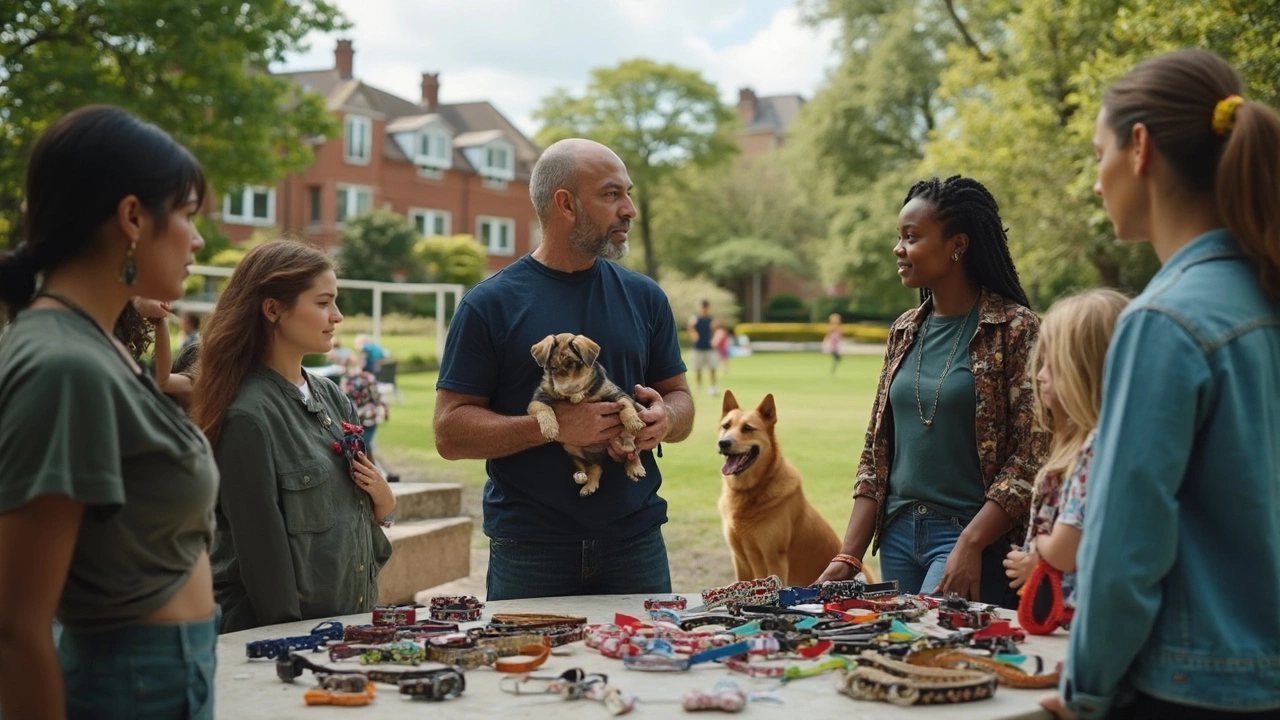Positive Reinforcement: Easy Ways to Train Your Dog
Want your dog to listen without the yelling? Positive reinforcement is the shortcut most owners ignore. It’s simple – you give a reward right after the right action and the behavior sticks. No fancy gear, no harsh corrections, just treats, praise, or play that your pup loves. In the next few minutes you’ll see how to turn everyday moments into training sessions that actually work.
Why Positive Reinforcement Works
Dogs are wired to repeat things that feel good. When you click a treat or a belly rub right after they sit, the brain links the action with a happy feeling. Over time the dog chooses that action on its own, even when you’re not holding a snack. Science backs this up: reward‑based training reduces stress and builds trust, so your dog stays calm and eager to learn. That’s why posts like “How to Stop Dogs from Barking” and “Dog Grooming Guide: Should You Cut Your Dog's Hair Wet or Dry?” both stress using treats or praise first.
Everyday Rewards You Can Use
You don’t need a commercial training clicker – any consistent cue works. Here are three reward types you probably have at home:
- Tasty treats: Small, soft bites work best. Keep them under 5 % of your dog’s daily calories so you don’t overfeed.
- Praise: A happy “Good boy!” in a bright voice is a powerful reward. Pair it with a quick petting session.
- Play: A quick game of tug or a fetch toss right after the command reinforces the behavior with fun.
Pick one reward and stick with it for a week. Notice how quickly your dog starts offering the behavior on its own.
Now try a quick practice round. Ask your dog to sit, wait a beat, then give a treat or a belly rub. If they jump up, ignore it and repeat the ask. Consistency is the secret sauce – you repeat the same cue, same timing, same reward every time. Soon the command becomes a habit, and you’ll see it in action during walks, car rides, or even when you’re just watching TV.
Positive reinforcement isn’t just for tricks; it fixes real issues too. Struggling with a dog that barks at the door? Use a treat when they stay quiet after the doorbell rings. Want better leash manners? Reward a loose‑lead walk every few steps. The trick is to catch the good moment and reward it immediately – that’s the core idea behind all the tag’s articles, from potty training timelines to travel stress‑free tips.
Ready to give it a go? Grab a handful of treats, pick a simple command, and start rewarding. In a week you’ll notice fewer stubborn moments and a happier pup. Remember, the goal isn’t just obedience – it’s building a partnership where your dog chooses to please because it feels great. Keep it short, keep it fun, and watch the results roll in.
Posted By Bryndle Redding On 23 Oct 2025 Comments (0)
DIY Dog Training: Step‑by‑Step Guide to Train Your Dog at Home
Learn how to train your dog yourself with a step‑by‑step DIY guide, covering tools, positive reinforcement, common challenges, and a handy checklist for lasting results.
READ MOREPosted By Bryndle Redding On 21 Oct 2025 Comments (0)
How to Teach Your Puppy Its Name - Simple Steps for Quick Recall
Learn a step‑by‑step method to teach your puppy its name using positive reinforcement, easy rewards, and real‑world tips for lasting recall.
READ MOREPosted By Bryndle Redding On 24 Jun 2025 Comments (0)
Does Cesar Millan Use Training Collars? Everything You Need to Know About His Dog Training Tools
Curious whether Cesar Millan uses training collars? This article breaks down the facts about the tools he uses, how they work, and the reasons behind his choices. Discover what really happens behind the scenes, learn tips for safer training, and see how the dog training world views his methods today. If you’re thinking of using training collars or just want to understand the debate, this is for you.
READ MORE

